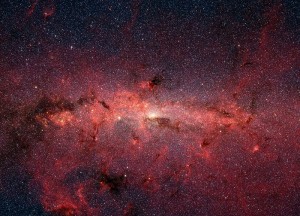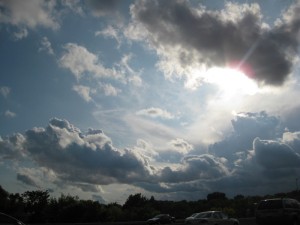Warming to Climate Claims
As Washington D.C. gets record snowfall, climate denialists cackle with glee. It was a cool summer, and now a cold winter. So, they wonder, where is this global warming?
"People," I want to condescendingly say, "look at the sun." Weather girls of all genders and persuasions are mentioning that this is the coldest winter in 11 years. Notice that? Are they unaware that there is an 11 year cycle of solar warming and cooling that corresponds to -- and can be measured by -- sunspots? So it's like saying with implied importance that this is the coldest month since 12 months ago. The spots are just starting up, much like the days getting longer at the end of December. Here is a nice look at the sunspot phenomenon.
 It is intuitively confusing that dark spots mean more heat. But the pair of images here shows visible and ultraviolet views of the same scene. Those dark spots are tunnels into the gamma-hot regions of the sun. Our eyes can only see one octave on the spectrum. Both hotter than blue and cooler than red ranges are invisible. Dark. Red hot is the coldest temperature that gives off light. (Read about Black Body Radiation if you want to know how this is known.)
Another detail that climate denialists get wrong is the meaning of heavy snowfall. If you get heavy precipitation, it implies much moisture aloft. That is, many more megatons of water are evaporated. By heat.
It is intuitively confusing that dark spots mean more heat. But the pair of images here shows visible and ultraviolet views of the same scene. Those dark spots are tunnels into the gamma-hot regions of the sun. Our eyes can only see one octave on the spectrum. Both hotter than blue and cooler than red ranges are invisible. Dark. Red hot is the coldest temperature that gives off light. (Read about Black Body Radiation if you want to know how this is known.)
Another detail that climate denialists get wrong is the meaning of heavy snowfall. If you get heavy precipitation, it implies much moisture aloft. That is, many more megatons of water are evaporated. By heat.
 So before you point to a low local current temperature as evidence against global warming, please look at the time scale that climatologists use, like the Temperature record of the past 1000 years, or even for the last century and a half:
So before you point to a low local current temperature as evidence against global warming, please look at the time scale that climatologists use, like the Temperature record of the past 1000 years, or even for the last century and a half:




